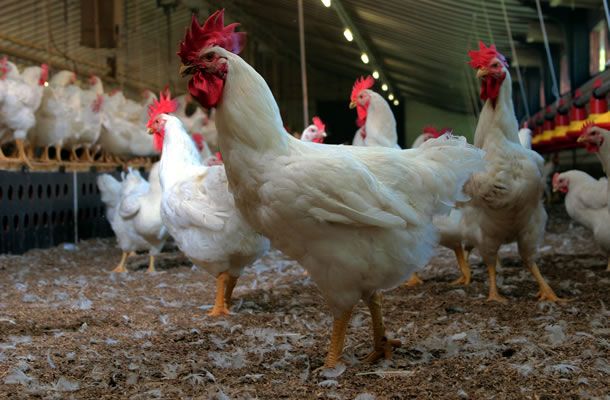Managing fertility: good breeding shows
Tags: Egg handling | Whitepaper
, August 27 2010

The percentage of fertile eggs is one of the most important parameters influencing the economic performance of a breeder flock. An embryo can of course only develop from a fertile egg.
Fertilization takes place - and thus can only be influenced on - the breeder farm. When we consider fertility, we usually think of the males. Yet in reality, the percentage of fertile eggs is a synthetic expression describing the condition and activity of the males, the condition of the females - and the propensity of both sexes to behave as nature intended. Sexual behaviour is closely allied to the contentment and welfare of the flock. Or put another way, fertility can be seen as a reliable measurement of the flock’s overall wellbeing.
A flock performing well in respect to fertility is one were both cockerels and hens are healthy and well developed. Both groups (sexes) should be uniform, with similar levels of maturity and well matched in size, good feathers and healthy, strong legs. These tend to be the characteristics of flocks in a low-stress environment, with sufficient space to promote natural behaviours and an optimum diet.
With these conditions, the inevitable changes related to the advancing age of the birds will proceed synchronically. In this sense, fertility is a trait that can be regarded as a dynamic process, rather than as a single characteristic. From the economic point of view, the deciding factor is the level of fertility that can be delivered in the late production period, after 45 weeks. This is also a time when the most differences between the flocks can be observed.
Advice
To promote enhanced fertility in the flock:
- Give special attention to development and uniformity in rearing: a good start in the first week, harmonic, steady growth, maintaining body weight standards from the beginning of the chick’s life and especially at 11 weeks are essential.
- Synchronize the maturity of males and females. Many potential problems arise from differences in development between the sexes. Males tend to mature earlier and may behave too aggressively for successful breeding.
- Observe behaviour in the poultry house in the afternoons - and be prepared to respond quickly. A good flock should remain active and well mixed at this time.
- Restrict water consumption at any age and take care of litter as a key factor in determining the house environment. Dry, loose litter helps the birds to remain clean and well feathered with healthy legs. Maintain feed to water ratio as 1: 1.7 - 1.9 in rearing and 1: 1.8 - 2.2 in the production period. Always ensure that the house is dry and warm.
- Avoid stress by limiting factors like diseases, drastic changes of housing conditions, feed composition or quantity, temperature and other basic parameters. Stick to routines.
- Stimulate mating by sprinkling grain on the litter in the afternoons. Let the males play the role of landlords, so they have the chance to show their leading position in the flock.
- Never keep too many males in the flock. Quantity cannot replace quality.
- It is better to keep fewer good cockerels than many of varying quality.
- If possible, replace old cockerels with new, mature males after 45 weeks of age. Alternatively, introduce ’intra-spiking’: the exchange of males between different houses. This creates a new social order that encourages increased activity and renewed fights for social position. Replace or exchange at least 40% of the males in a house.